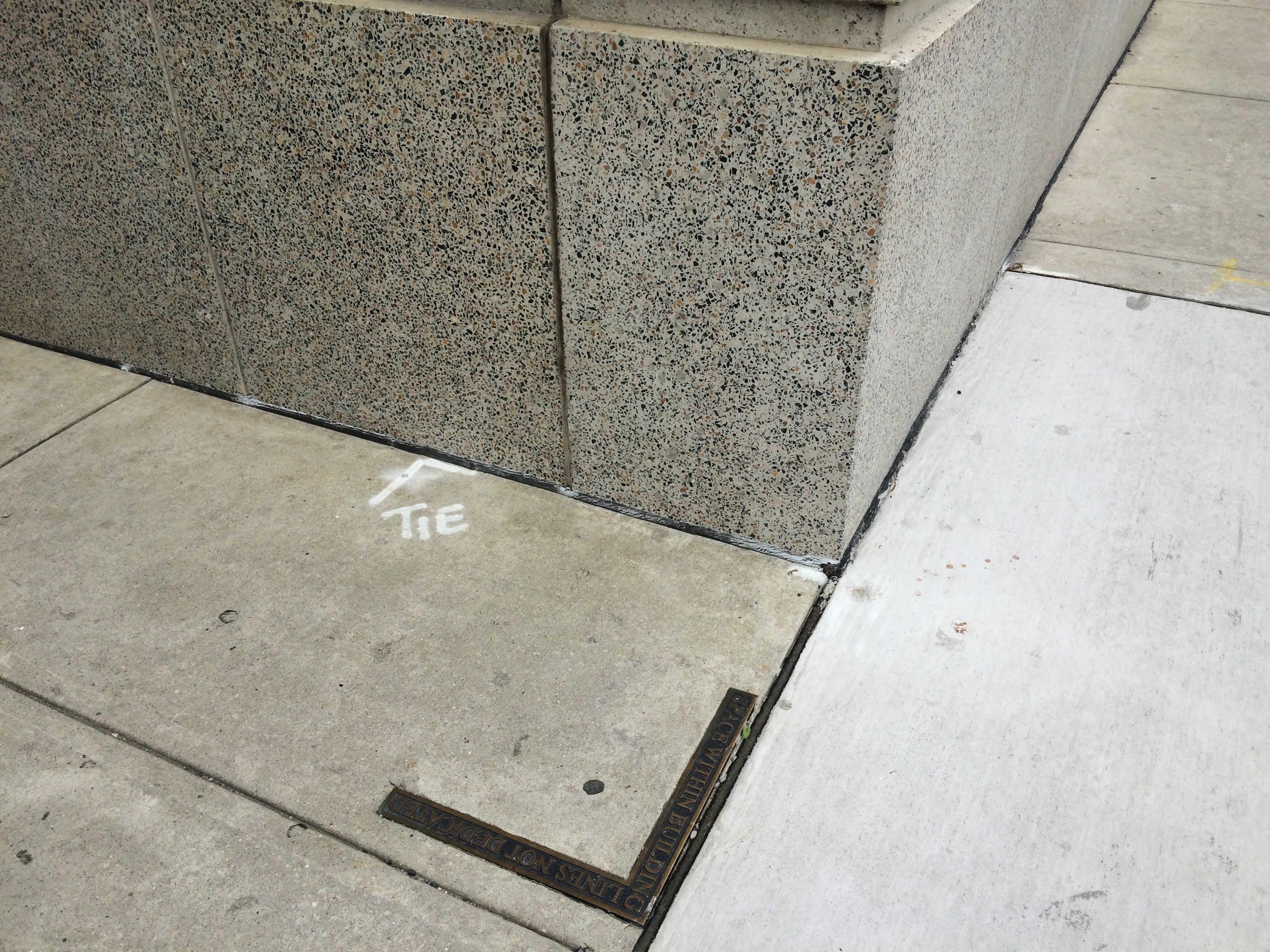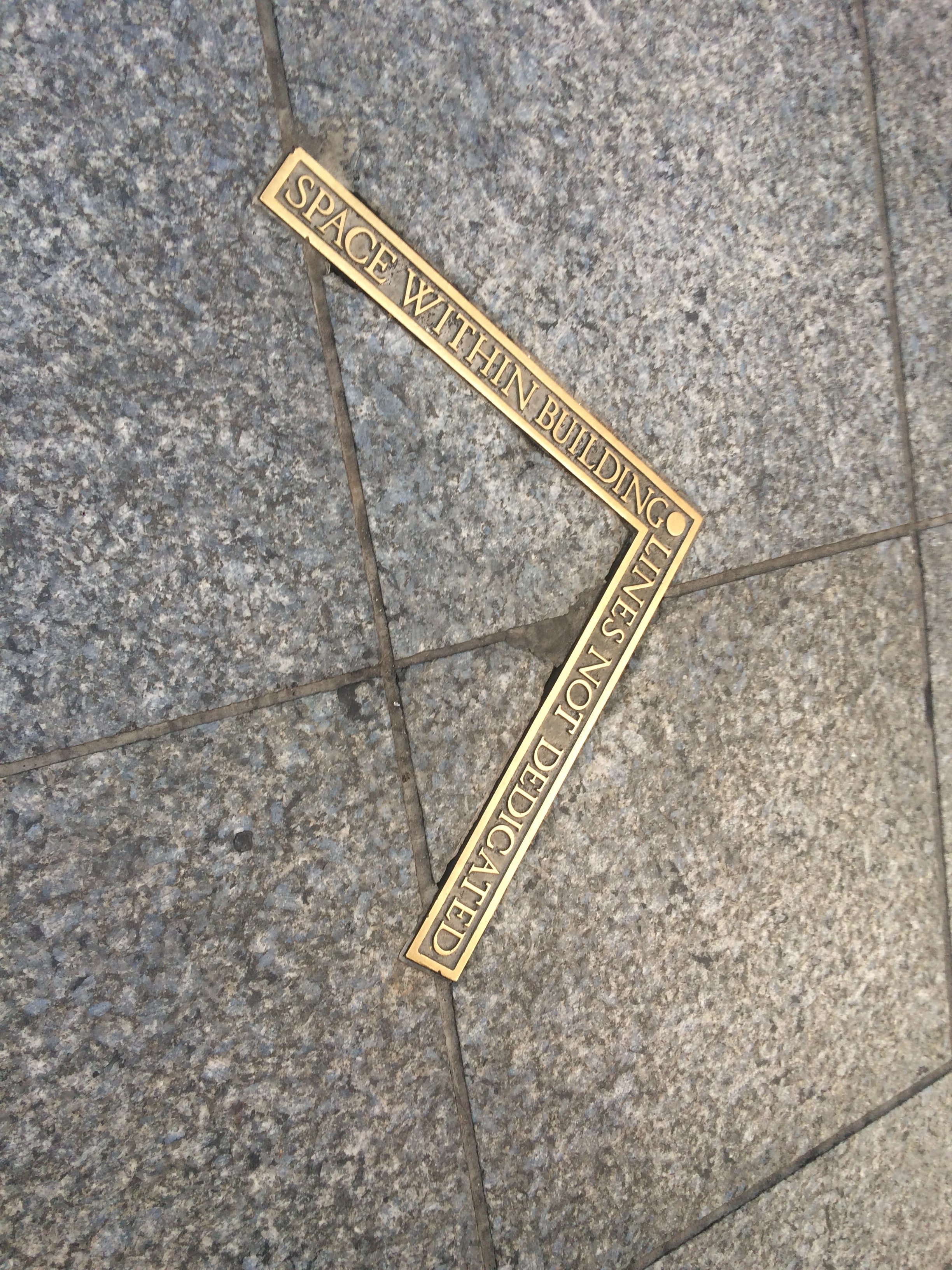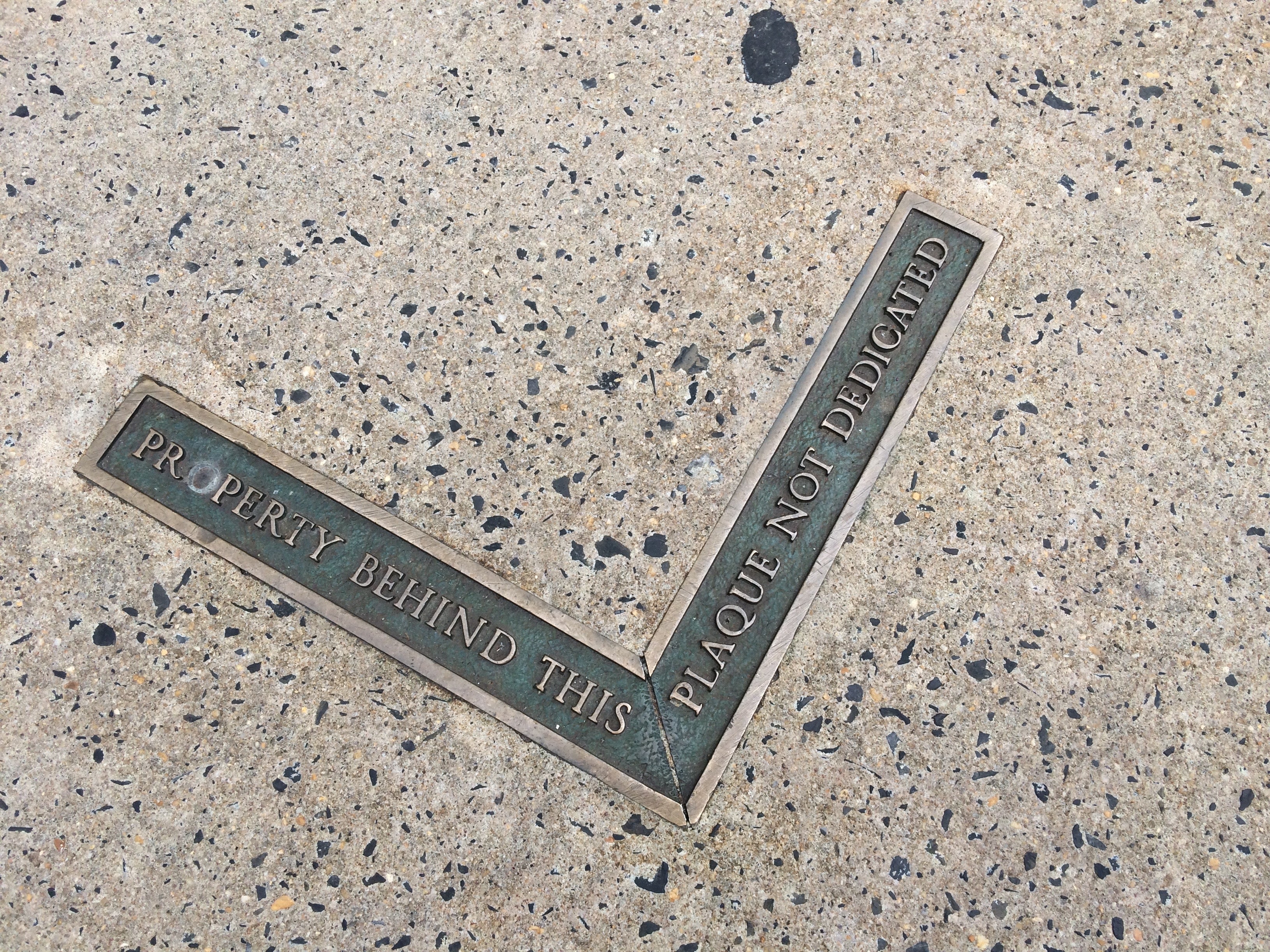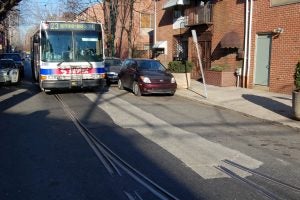Streetsplainer: What the heck do those “The space between these lines not dedicated” street markers mean?
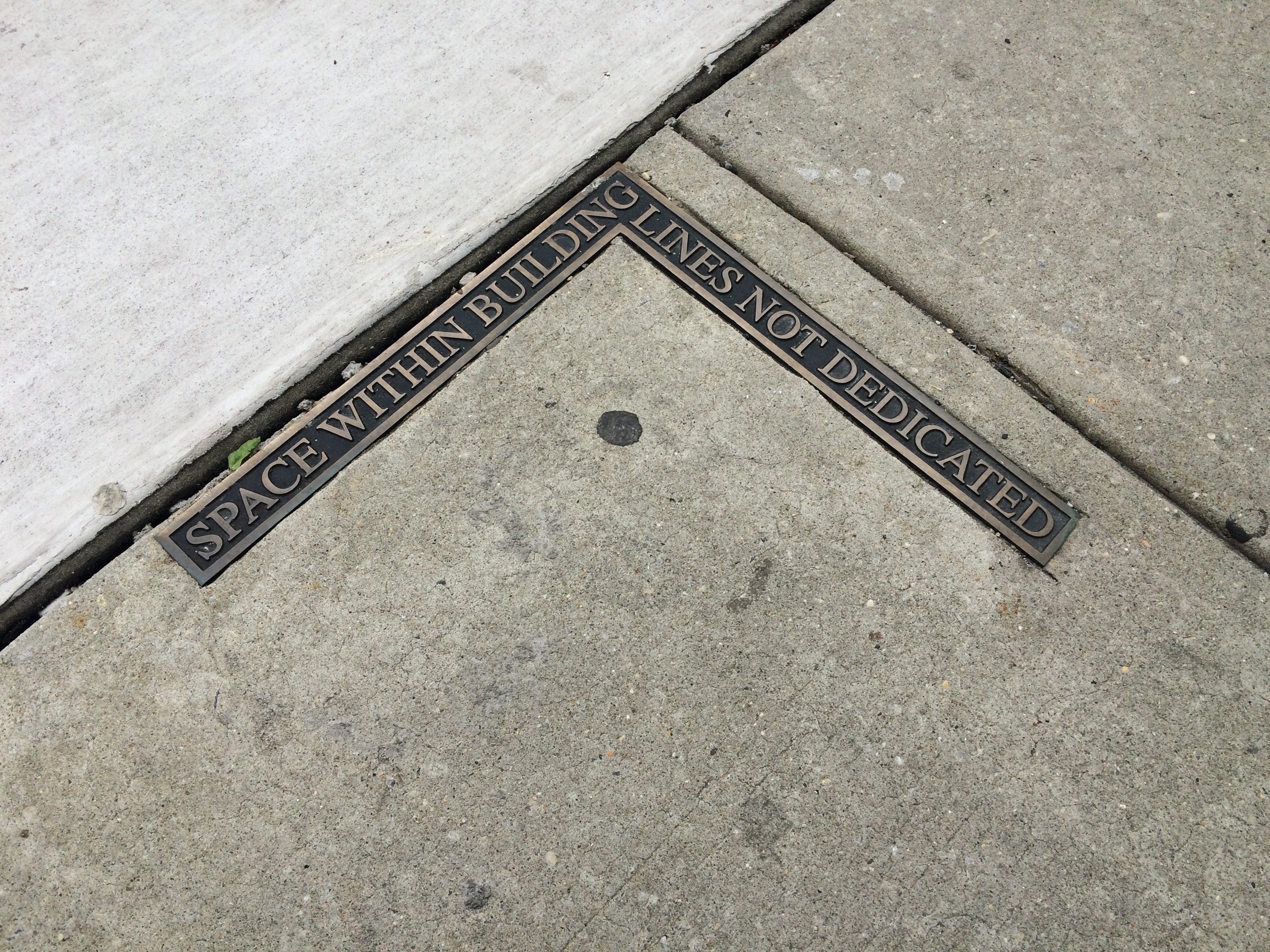
Streetsplainers is an occasional series where we seek out answers to those often overlooked questions about our beleaguered/beloved transportation systems: Just what the heck is that thing in the road? Why on Earth would SEPTA do that? How does that weird doohickey work? E-mail Jim Saksa your questions, and he’ll chase down the answers, hopefully in a reliably on-time fashion
Occasionally, I walk around Philly with my head down, Charlie Brown-like, often after a rough Phillies loss or because I made the mistake of looking at my checking account balance. When I do, I often come across these plaques embedded in the pavement declaring some variant of “THE SPACE BETWEEN THESE LINES IS NOT DEDICATED”.
Not dedicated? Is the space between these lines a flake? A Democratic National Convention superdelegate? Interested in helping out the cause in theory but just has a lot on his plate right now, y’know?
None of the above. “Dedicated” here is legalese. Those sidewalk signs are simply saying: “Hey friend, it’s cool for you to walk here, but, just so you know, this is private property.”
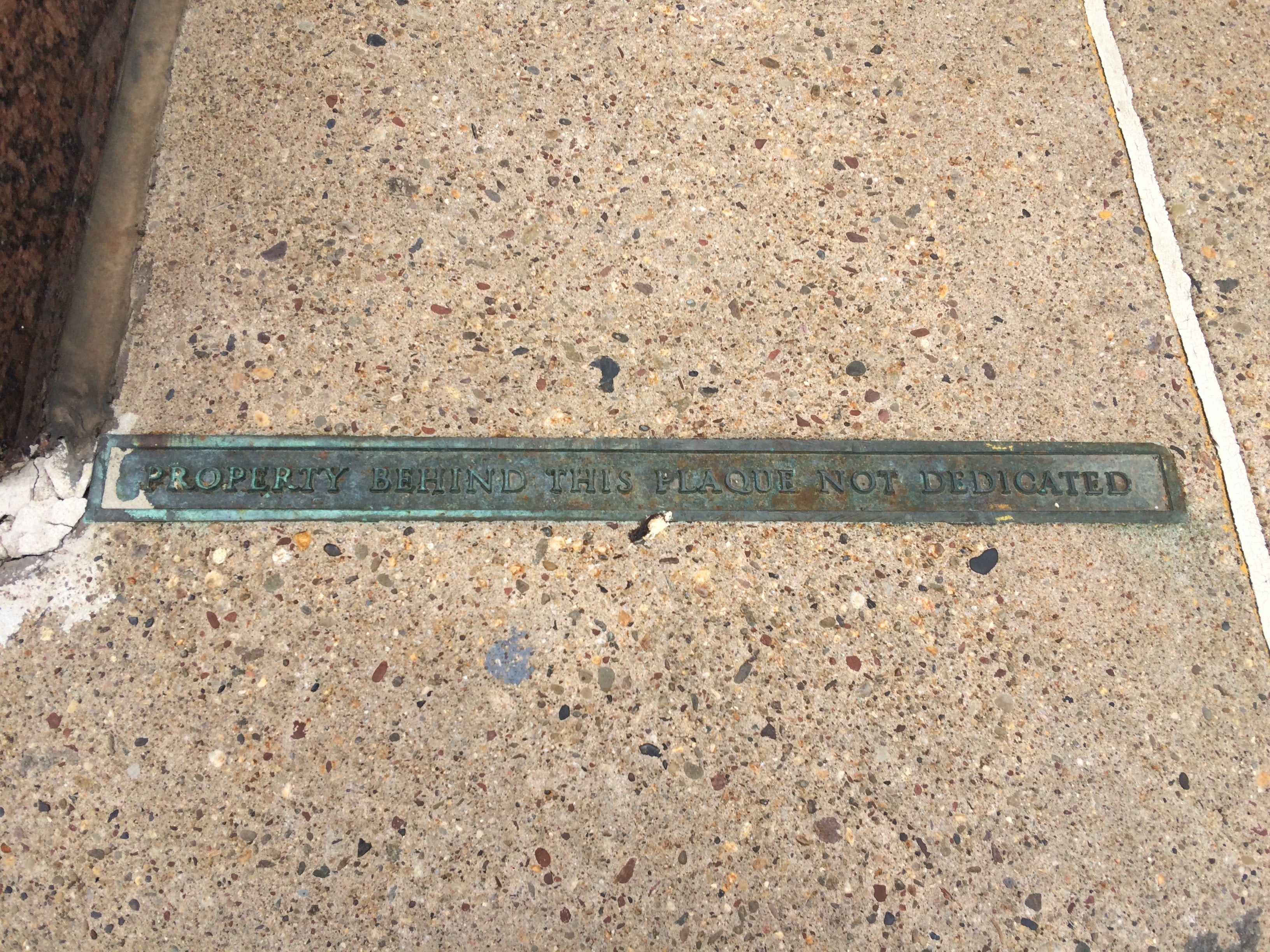
Black’s Law Dictionary defines dedicate as: “To appropriate and set apart one’s private property to some public use; as to make a private way public by acts evincing an intention to do so.”*
As I reported last week, Conrail is expected to dedicate some land to the City of Philadelphia to become part of the ever-growing Schuylkill River Trail.
As this “Ask Benny” feature in the Penn Current notes, these plaques are used by builders to demarcate their actual property lines and state clearly that they are not permanently granting access or surrendering ownership of the space.
The plaques are used when the property lines don’t align with the building’s physical dimensions or the dimensions of any sort of fencing, landscaping or other improvements that would clearly mark a boundary between the public right-of-way and private property. In these situations, the property line falls somewhere in the middle of the sidewalk.
Why does this matter? Because of a legal concept known as prescriptive easement. Easements generally refer to rights that the public (or a specific set of individuals) may have to use someone else’s private property. Most of the time, it’s the right to travel across someone else’s land, like when the only paths to a public beach are on someone’s lawn. Easements can be granted through agreements or laws, or they can be granted through the law of adverse possession—those are prescriptive easements.
Adverse possession is a quirky, old legal doctrine. Basically, if someone other than the owner of a property uses it blatantly, consistently and exclusively for a long, statutorily set amount of time—21 years in Pennsylvania—then they own it. The owner surrenders title and the squatters get to keep the land. It’s exceedingly rare but not entirely unheard of: A community garden in Kensington is fighting an eviction notice using adverse possession, saying in their lawsuit filed in March that their uninterrupted 28-year stay means they own the property now.
Prescriptive easements work in the same way, but with lesser stakes. If you let someone cut across your lawn for 21 years in Pennsylvania without doing anything at all to stop him, you’ve effectively granted him an easement.
And that’s why we have the plaques: The building owners are declaring in public that even though they haven’t built a fence keeping the public out, they haven’t ceded anything. If Penn or the Federal Reserve wants to expand their building to those signs line, they can.
And, as a final note, just because the government owns a property doesn’t make it “public” in the sense that the public enjoys free access to it like public rights-of-way. This makes intuitive sense when you think about military bases or the CIA’s headquarters, and it explains why the Federal Detention Center uses the plaques, too. Taxpayers may own it, but we aren’t allowed free access to it.
*Note: Speaking of Mr. Black, Esq., his dictionary also describes Philadelphia Lawyer as: “A term that is a popular expression for an attorney who is sly and crafty in his practicing of the law,” which would be accurate if between “expression” and “for” it also read: “among Philly lawyers and no one else in the world”.
WHYY is your source for fact-based, in-depth journalism and information. As a nonprofit organization, we rely on financial support from readers like you. Please give today.



